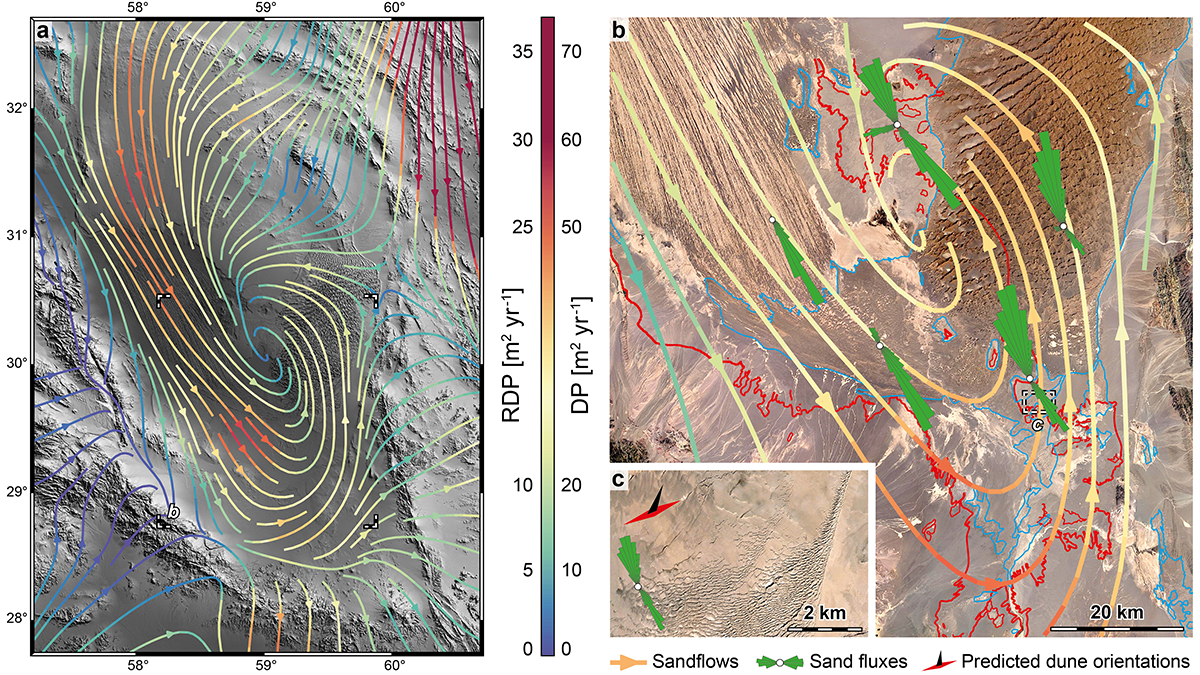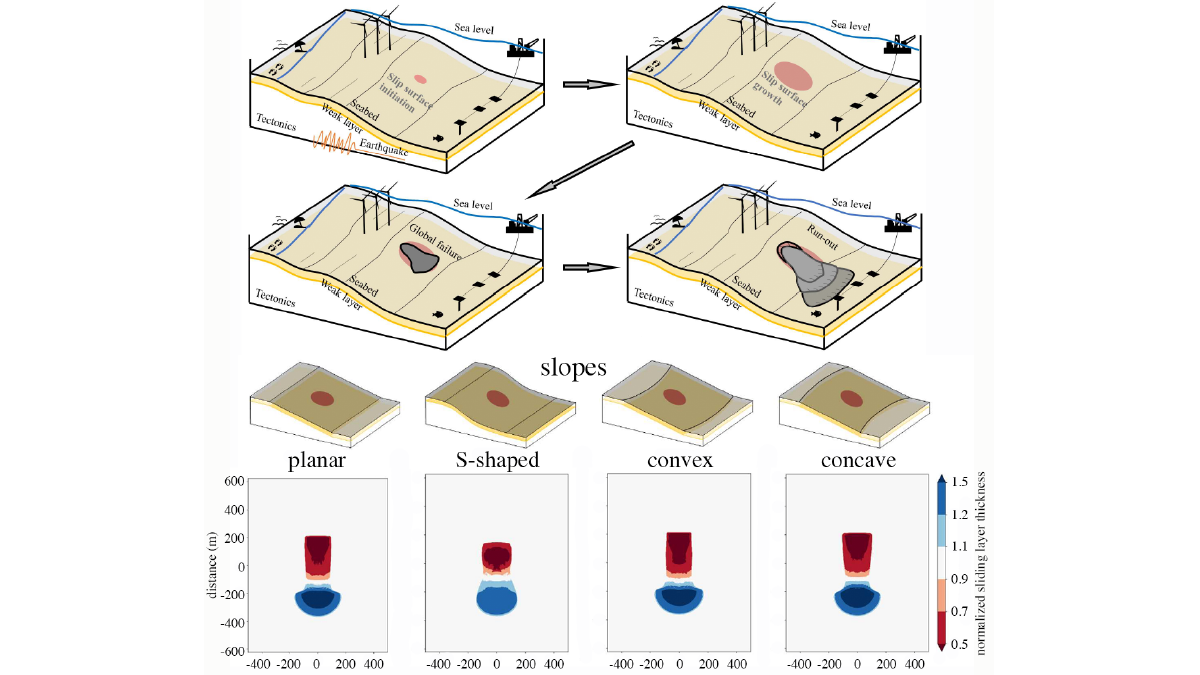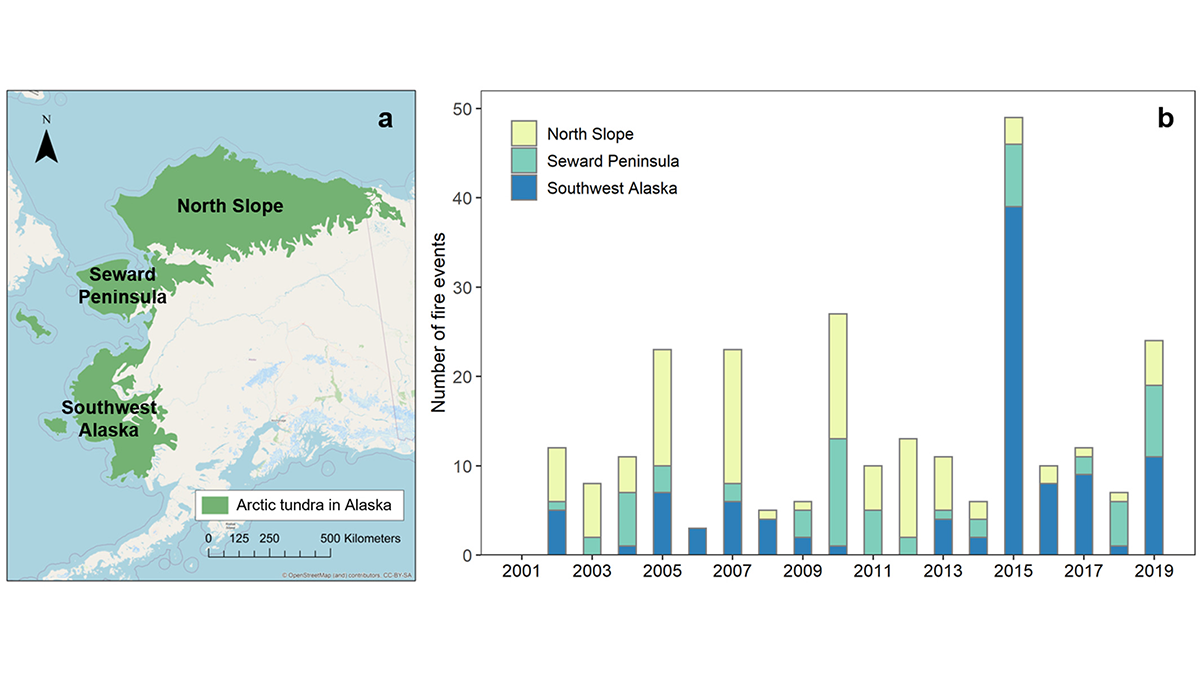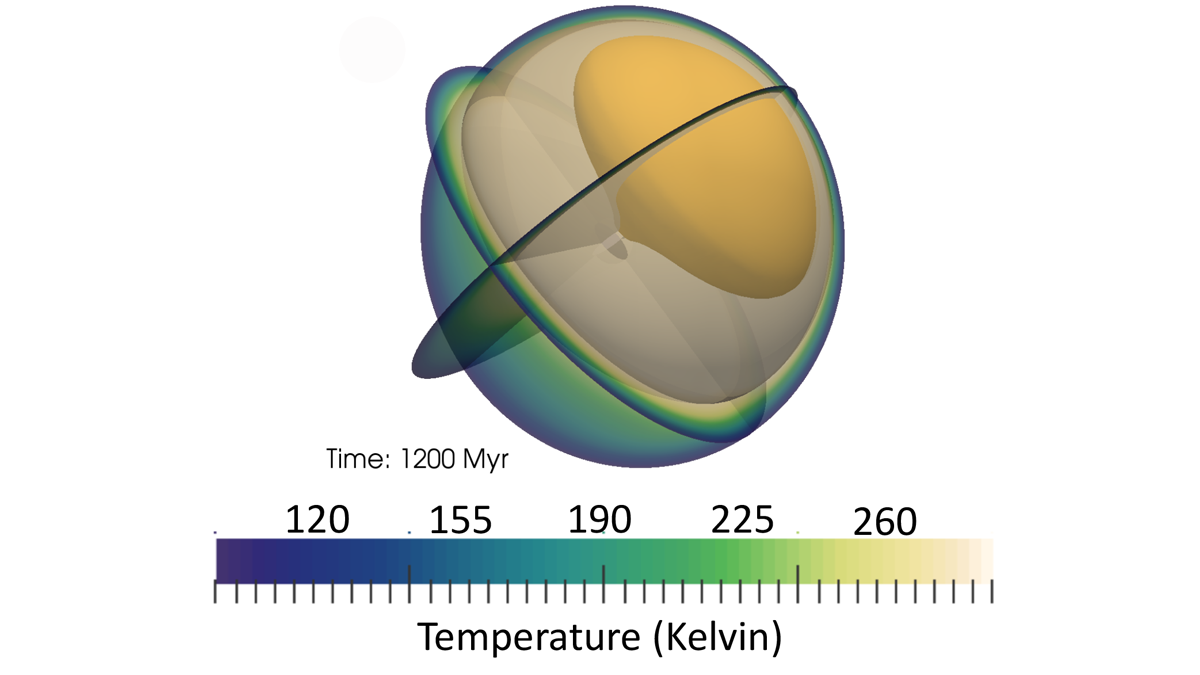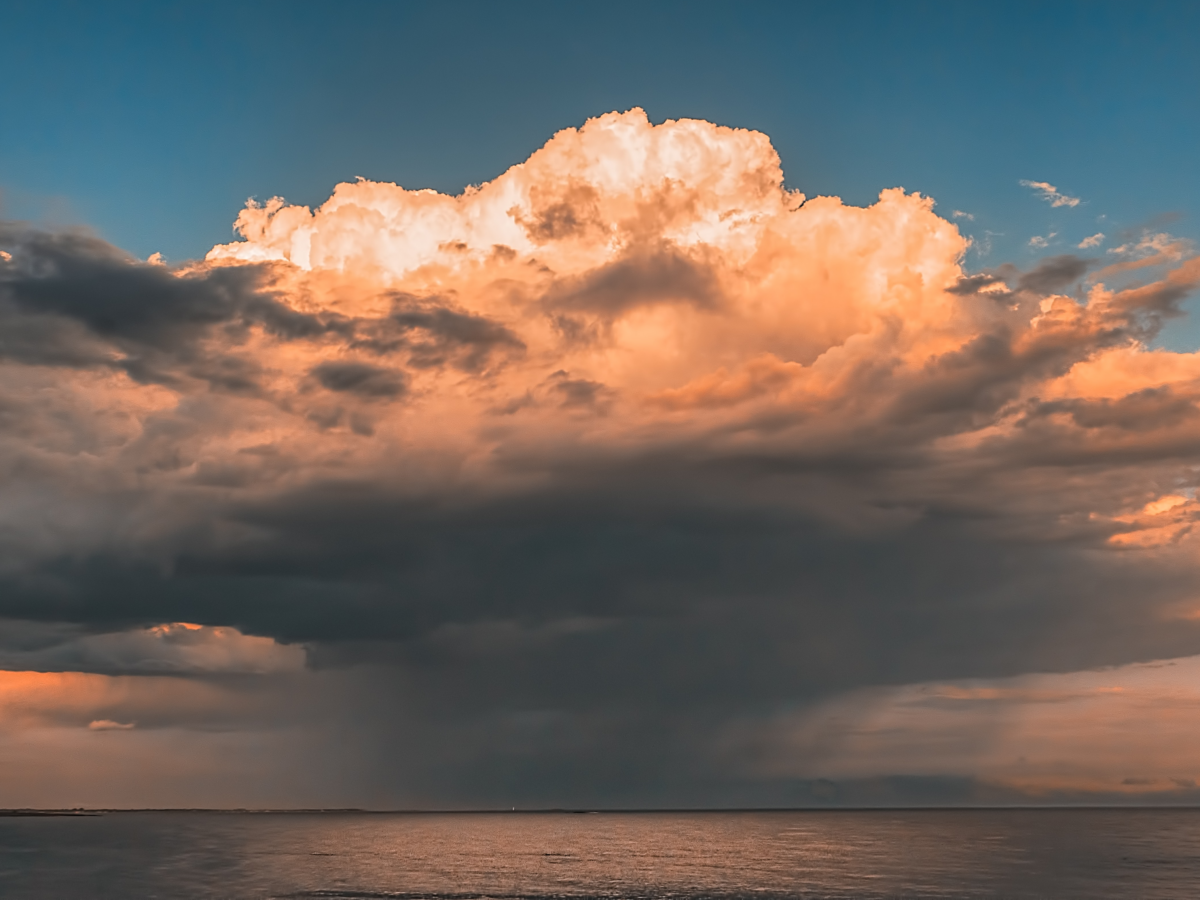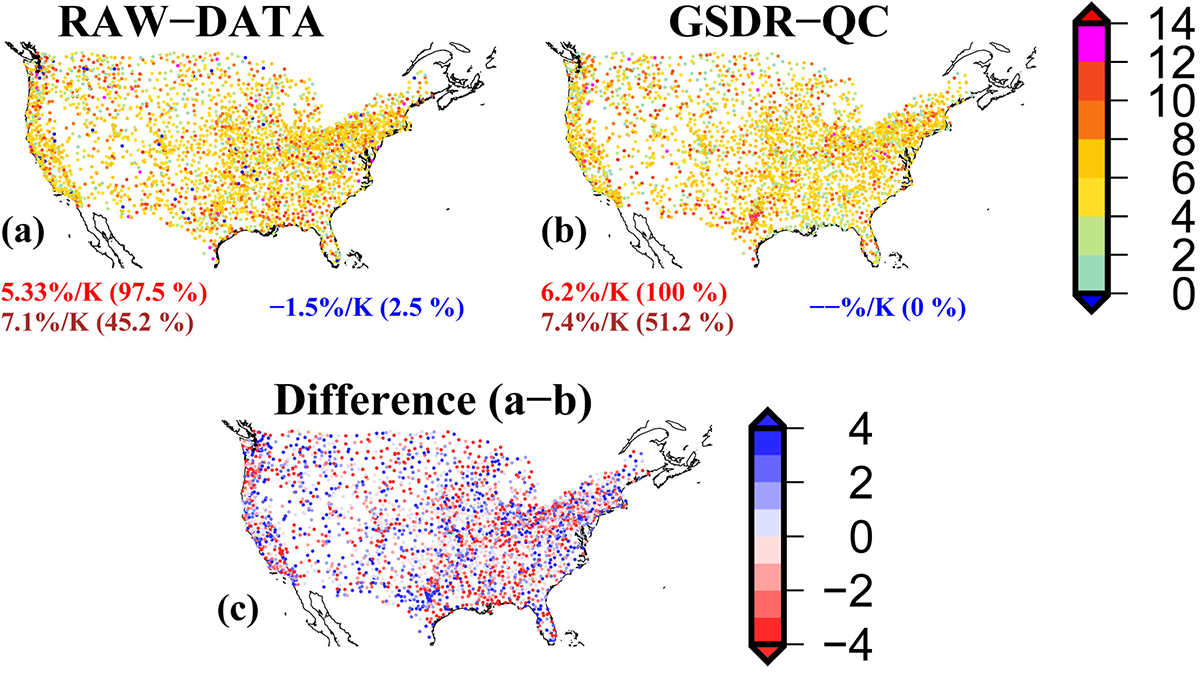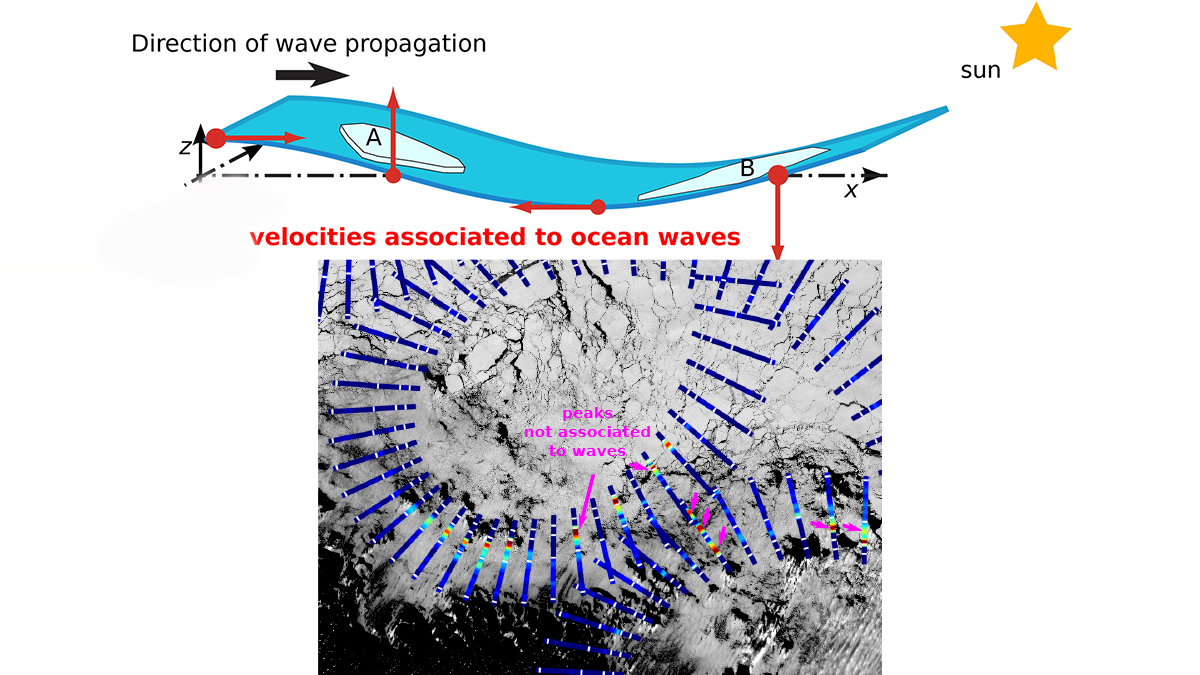As cities face health threats from heat and air pollution—both expected to worsen from climate change—researchers pilot a community scientist effort to map air quality and improve urban health.
Editors’ Highlights
Western US Adjoint Tomography Reproduces Waveform Complexity
Adjoint tomography employing 3D wavefield simulations for 72 well recorded regional earthquakes in the western U.S. yields spectacular improvements to waveform fits.
A Unique Glimpse at Sediment Erosion and Deposition by Wind
The Lut Desert in Iran is an exceptional natural laboratory to study how wind moves sediment across the landscape. A new study quantifies erosional and depositional sediment fluxes of the desert.
Growth That Economists Would Envy
A new study reveals how small cracks turn into gigantic submarine slides.
Lightning in Alaskan Tundra Ignites Most Fires
Cloud-to-ground lightning is found to be the most important controller of wildfire occurrence in the Artic tundra of Alaska from 2001 to 2019.
Ceres: Missing Craters, Crust Thickness Variation by Interior Convection
Models show that several puzzling features about Ceres’ topography, gravity anomalies, and crater size distribution may be explained by asymmetric hemispherical convection due to radiogenic heating.
It’s Cool to be Short When You’re in the Arctic Permafrost
Extensive ground temperature measurements complicate our understanding of how vegetation cover, snow duration, and microtopography influence the pace of permafrost thaw in a changing climate.
More Accurately Modeling Rain Formation
Rain and cloud droplets are treated as distinct categories in most models yet lie on a continuous droplet size spectrum in nature. Representing them as part of a continuous spectrum improves models.
Explaining Uncertainty in Estimates of Rain Response to Warming
Humidity increases with warming. Theory and observations about how increased humidity translates into more extreme rainfall can be reconciled if attention is paid to data and methods.
Satellites Remotely Measure Ocean Waves and Sea Ice Interactions
A new method for using satellite observations from multiple sensors improves measurements of ocean waves as they propagate through and interact with sea ice.



